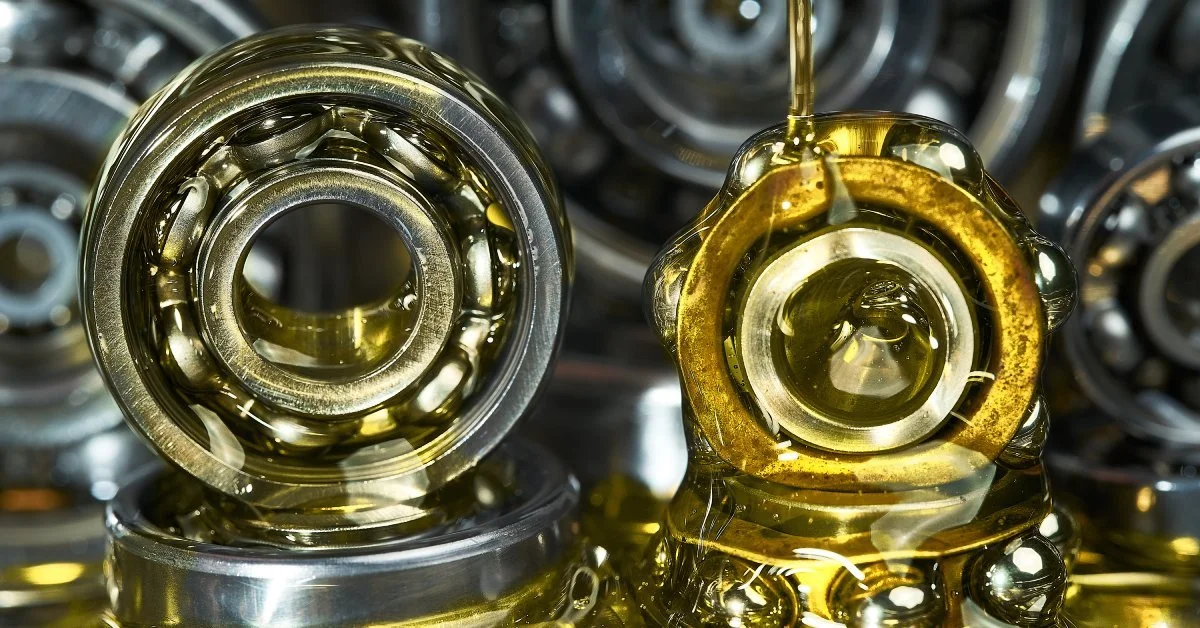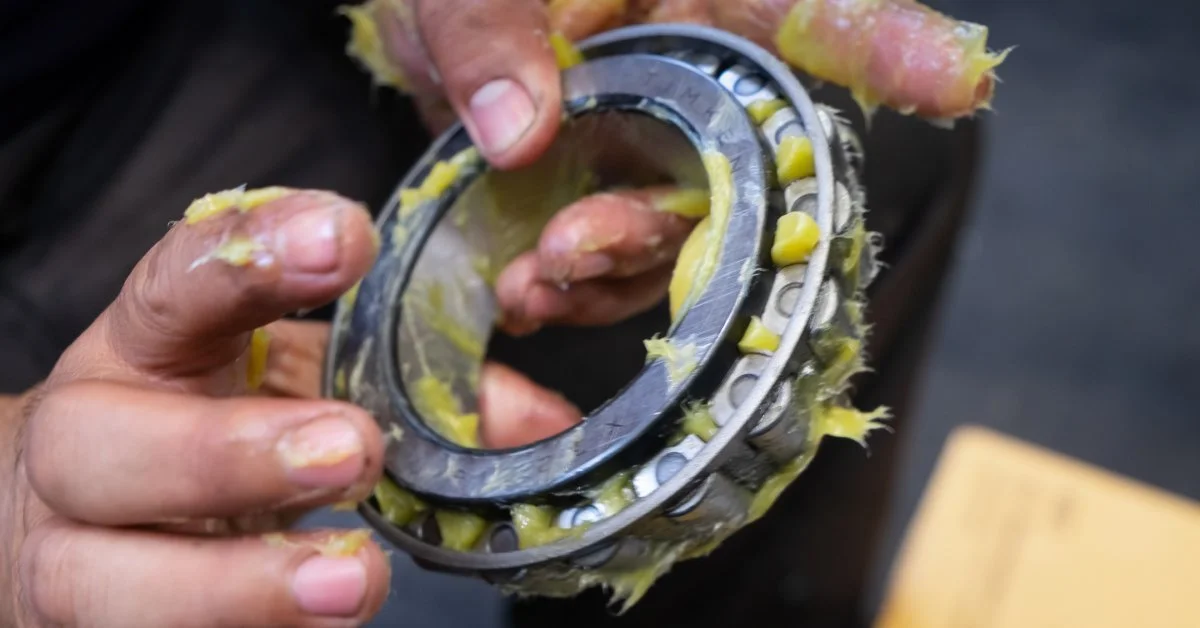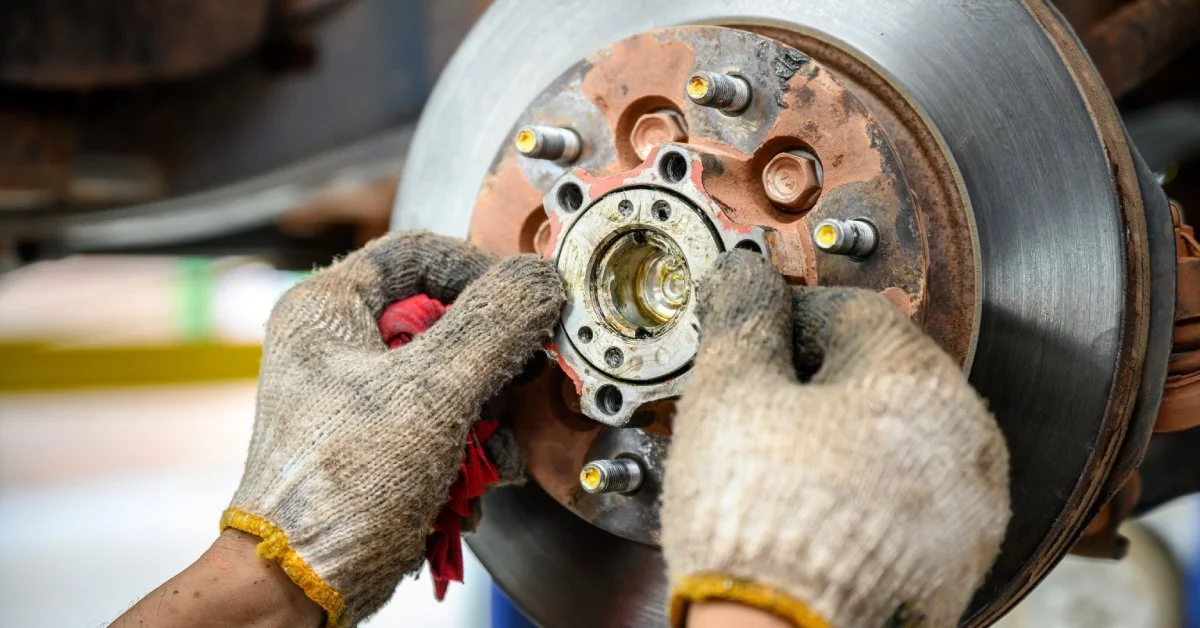Common Mistakes To Avoid When Greasing a Bearing
Bearings can be found in a wide range of equipment, from industrial machinery to automotive engines. However, their performance and longevity rely heavily on proper maintenance practices, particularly greasing. While greasing seems straightforward, there's more to it than meets the eye. Missteps in the process can lead to equipment failure, costly downtime, and safety risks.
Learning about the most common mistakes to avoid when greasing a bearing will help you avoid them and ensure proper application. Along the way, we’ll offer useful tips for selecting the right lubricant, making it a simple matter to get machinery up and running with minimal effort.
Why Bearings Require Greasing
Bearings are used to reduce friction between moving parts, and proper lubrication is vital to ensure smooth rotation and minimize wear. Proper greasing helps maintain:
Enhanced durability: Properly greased bearings experience less wear and tear, extending their lifespan and reducing the need for frequent replacements.
Reduced friction: Grease ensures smooth operation by minimizing friction between moving parts, improving efficiency and performance.
Heat dissipation: Greased bearings help dissipate heat generated during operation, preventing overheating and potential damage.
Contaminant protection: Proper lubrication creates a barrier that keeps dust, dirt, and moisture away, safeguarding the bearings from corrosive or abrasive elements.
Improved efficiency: Well-greased bearings ensure optimal performance of machinery, reducing energy consumption and operational costs.
Noise reduction: Effective lubrication minimizes noise caused by metal-to-metal contact, leading to quieter and smoother operation.
Preventing mechanical failures: Regular greasing reduces the risk of breakdowns, decreases downtime, and improves overall reliability.
Greasing a bearing keeps it cool, prevents contaminants from entering, and minimizes mechanical failures. However, it's important to ensure it’s done right, avoiding the common mistakes that often trip people up.
Mistake #1: Using the Wrong Grease Type
Not all greases are created equal. Using the incorrect grease type for a bearing can result in suboptimal performance and unwanted damage. Grease must match the bearing's operating environment, load requirements, and speed rating.
To avoid this, refer to the manufacturer's recommendations for grease specifications. Additionally, be sure to use grease with a suitable viscosity and base oil type for the specific application.
Mistake #2: Over-Greasing the Bearing
While it might seem like more grease equals better protection, over-greasing is a common mistake that can result in heat and pressure buildup inside the bearing, damaging seals or leading to premature failure.
To keep bearings moving smoothly, use the right amount of grease as specified by equipment guidelines. It may also be a good idea to invest in calibrated grease guns to apply precise amounts during maintenance.
Mistake #3: Under-Greasing the Bearing
On the other hand, under-greasing a bearing leads to inadequate lubrication. This exposes the bearing to excessive wear, contamination, and overheating.
It's good practice to establish a regular greasing schedule based on usage and operating conditions. Take the time to check for visual or audible signs of insufficient lubrication, such as squeaking or excessive heat, and make the necessary adjustments if needed.
Mistake #4: Mixing Different Grease Types
Not all greases are chemically compatible. Combining greases with different thickeners, base oils, or additives can result in separation, reduced performance, or bearing damage.
Be sure to stick to one grease type for a specific application. Only introduce a new grease after verifying compatibility with the old one through testing documentation.
Mistake #5: Not Cleaning the Grease Gun and Fittings
Dirty grease guns and fittings can introduce contaminants to the bearing. These unwanted particles may cause abrasive wear or clog lubrication pathways.
These potential issues make it important to thoroughly clean grease guns and fittings before each use. When finished, store them in a clean, dust-free environment.
Mistake #6: Ignoring the Equipment Manufacturer's Recommendations
Equipment manufacturers provide detailed lubrication guidelines tailored for specific bearings and applications. Ignoring these guidelines can lead to improper greasing and reduced performance.
Carefully following directions helps avoid these issues. Always reference the manufacturer's manual for grease specifications, application amounts, and maintenance schedules.
Mistake #7: Not Purging Old Grease
Failing to purge old grease results in a mixture of fresh and degraded grease, which compromises lubrication efficiency and allows contaminants to accumulate.
It's good practice to remove old grease completely before applying fresh grease. Before getting rid of it, verify that the grease purged during the process is free of contaminants.
Mistake #8: Overlooking Bearing Condition
Applying grease to a damaged or worn-out bearing will not solve underlying issues. Neglecting to inspect bearings can mask problems that require immediate attention.
Be sure to inspect bearings for wear, noise, or irregular rotation during greasing routines. Always replace damaged bearings promptly to prevent equipment failure.
Mistake #9: Ignoring Environmental Factors
The operating environment has a significant impact on grease performance. Extreme temperatures, moisture, and contaminants can cause grease to degrade more quickly.
Pay attention and select grease designed for specific conditions. It's okay to increase greasing frequency in particularly adverse environments.
Mistake #10: Not Documenting the Greasing Process
Lack of proper documentation leads to inconsistent maintenance practices. Without accurate records, it can be difficult to identify when grease was last applied or gauge how much was used.
Learn to maintain upkeep logs detailing greasing schedules, grease types, and quantities used. Consider digitizing maintenance records for accuracy and easy access.
Tips for Choosing the Right Lubricant
When selecting a lubricant, consider the following factors.
Consider Operating Temperature
Select a lubricant that performs effectively within the temperature range of equipment to prevent breakdowns and inefficiencies.
Evaluate Load Requirements
Ensure the lubricant is suitable for the load and pressure the application will endure to avoid excessive wear.
Check Compatibility
To prevent damage, verify that the lubricant is compatible with the materials it will come into contact with, such as seals or metals.
Assess Environmental Conditions
Consider factors such as moisture, dust, or exposure to chemicals, and select a lubricant specifically designed to withstand these conditions.
Look at Speed Ratings
Choose a lubricant with the appropriate viscosity to handle the operational speeds of the bearing or machinery.
Prioritize Longevity
Opt for a high-quality lubricant that offers long service life to reduce the frequency of reapplication and minimize downtime.
Why Choose AMSOIL for Bearing Grease?
AMSOIL provides industry-leading grease products trusted for their superior performance and protection. Here's why AMSOIL is a smart choice:
High-quality formulation: AMSOIL greases are engineered to withstand extreme temperatures, pressure, and contamination.
Wide range of options: From heavy-duty industrial applications to precise instruments, AMSOIL has a grease to match your equipment’s needs.
Ease of application: AMSOIL greases are designed for smooth, effortless application, ensuring accurate distribution and performance.
Proven results: Tested and trusted by professionals, AMSOIL greases deliver long-lasting results for thousands of applications.
People from all walks of life choose AMSOIL first for their lubrication needs.
Extend Bearing Life With Proper Greasing Practices
Proper greasing is essential for maximizing the performance and lifespan of bearings. By avoiding these common mistakes when greasing a bearing, anyone can improve their equipment's reliability, efficiency, and cost-effectiveness.
For those ready to take their lubrication practices to the next level, AMSOIL's premium grease products offer both reliability and affordability. At 1972oil, we carry the latest in automotive grease for maximum performance. Get ready to experience the difference!



